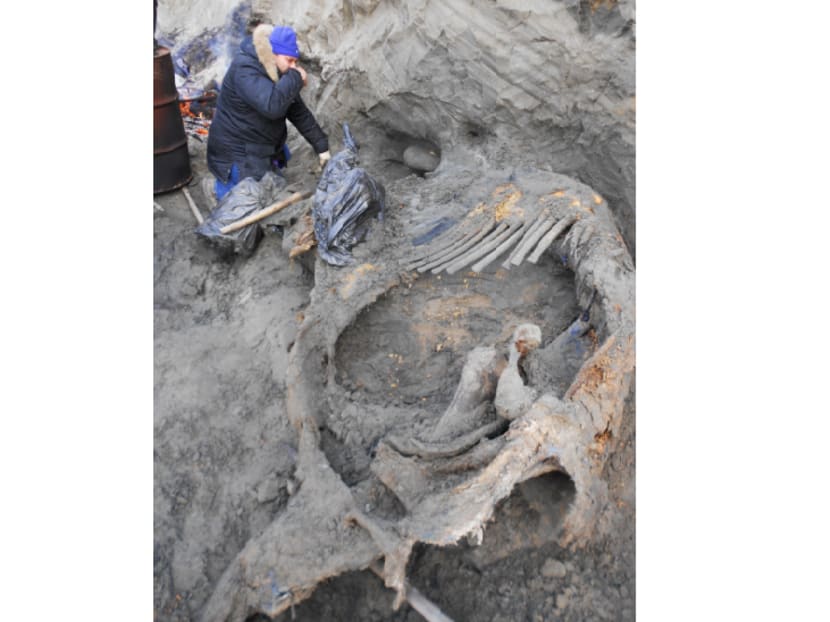Humans inhabited Arctic 10,000 years earlier than thought: Study
WASHINGTON — The remains of a prehistoric mammoth bearing evidence of having been attacked by arrows or spears suggests humans lived in the Arctic thousands of years earlier than believed, according to a study published yesterday (Jan 14).

Researchers at the excavation site of a mammoth carcass in northern Russia's Siberia region near the Kara Sea. Photo: AP
WASHINGTON — The remains of a prehistoric mammoth bearing evidence of having been attacked by arrows or spears suggests humans lived in the Arctic thousands of years earlier than believed, according to a study published yesterday (Jan 14).
Released in the journal Science, the findings by a team of Russian scientists in the Siberian Arctic are leading experts to rethink earlier estimates that placed human habitation in the region beginning some 35,000 years ago.
The new research suggests that humans may have lived in the area as far back as 45,000 years ago — 10,000 years earlier than originally thought.
The reassessment is based on a study conducted in 2012, by Dr Alexei Tikhonov and his fellow researchers at the Russian Academy of Sciences in Saint Petersburg.
The scientists excavated the frozen carcass of a male woolly mammoth in the central Siberian Arctic. Through radiocarbon dating of the animal’s remains, scientists placed the age of the animal at around 45,000 years old.
They said the mammoth bore signs of unusual injuries, including dents and gouging on its ribs, right tusk and mandible consistent with having been attacked by sharp weapons.
The findings appear to show, they said, that human hunters were present in Arctic Siberia at the time.
“Advancements in mammoth hunting probably allowed people to survive and spread widely across northernmost Arctic Siberia at this time...” said a summary published in Science.
The researchers said it marked “an important cultural shift — one that likely facilitated the arrival of humans in the area close to the Bering land bridge, providing them an opportunity to enter the New World before the Last Glacial Maximum” some 22,000 years ago. AFP





